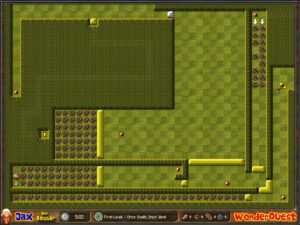Dark Souls
My Twitter feed is all abuzz about Elden Ring, the latest action-RPG from From, and it’s made me want to, if not exactly get on the bandwagon, then at least catch up with it a little. I’ve had the studio’s breakout hit Dark Souls in my Steam library for some time, probably from a bundle, but previously only played as far as the first boss (the “Asylum Demon”), which means I didn’t make it out of the tutorial area. I’ve gotten considerably farther now — it took a few hours for the game to really click with me, but once it did, I played til dawn. Well, after all, it’s an RPG levelling treadmill. Those are always moreish.
That treadmill also presents a bit of a puzzle. This is a game mainly known for its difficulty. It’s always a centerpiece of debates about the “git gud” attitude and whether games should be obliged to sport an easy mode. But surely a leveling-up mechanic contradicts that, by letting you substitute grinding XP for skill? I’ve seen it argued that it isn’t really as hard as its reputation, and right now, about nine hours in, I’m inclined to believe it. I’m definitely feeling a greater sense of progress here than I was in the later levels of Wonderquest (which I still intend to finish). When I’ve been severely stuck, it’s usually been because I failed to notice an important doorway.
But I’m noticing tricks that the game plays to create a sense of extreme difficulty. For one thing, it makes it very easy to run into enemies that you’re not remotely prepared for. And once you’ve been killed by one, it motivates you to seek it out again, to recover the Souls (XP) and Humanity (???) that you dropped when you died. “Run past it, grab the thing, and vamoose” is a crucial part of your play list. In fact, the first time you meet that Asylum Demon, the only realistic approach is a retreat. This early helplessness enhances the sense that you’ve gat gud when you find your way back to it and can fight it this time, even though it’s really mainly because you’re better-equipped.
Still, it’s early days yet. We’ll see how I feel when I’m deeper in.
 Comments(0)
Comments(0)